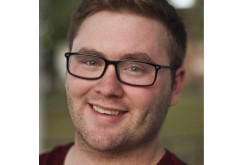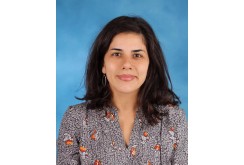
A few summers ago, my daughter Sarah was bound for Denver. Sarah had committed to serve in the AmeriCorps’ City Year program. Before she left, I helped to pack up her car. She had a few meager belongings, mostly clothes and books. She had sold off almost everything else she had owned. She was off to more than a grand adventure; this journey was meant to jumpstart her career as an educator. Moments before she left, I took a photo of her at Kerry Park, overlooking the city of Seattle. In the photo she is holding her City Year badge and beaming with pride. She wanted to know if her passion for teaching was a passing fancy or her true heart’s desire. Soon she would find out.
By the time she arrived in Denver, she was short on money but long on determination. Having grown up in Seattle’s Queen Anne neighborhood, Sarah often described herself as being white and privileged, which on some scales might be true, but she was nowhere near to being a trust fund baby. The monthly stipend for her AmeriCorps service was so small that she qualified to get Medicaid and received food stamps to supplement her income. In Denver, she was assigned to a school that was located close to the largest housing development in the city. Classified as a red school, the predominately Hispanic school was marked for closure unless it could be turned around. Sarah’s students were in the third grade and lived in the neighborhood. Caucasian students were almost nonexistent, less than one percent of the total student body.
After Sarah settled into her post and life in Denver, she invited me to visit her school. Her third grade students called her Miss Sarah, and when they learned that I was her mother, they had questions for me. They wanted to know what Sarah was like when she was their age. “Well, she used to pretend that she was a lady bug,” I said, “And make strange clicking sounds, the ways she thought lady bugs talked.” What else, the kids wanted to know. “She used to like to go for moon walks,” I told them. “No matter what phase the moon was in, we would take walks, stare into the sky and search for the moon to see just how big it was that night.” Their faces were open and full of curiosity and every single one had something to share about Miss Sarah, how she talked to them, listened to them or helped them to read a story. Soon, I saw a different side of my daughter. She was touching young lives in a way that I did not know was possible—she was becoming a teacher.
Sarah’s budding career as a teacher didn’t include a plan to carry a gun. The threat of violence in schools is always there, but a shooting could erupt anytime in any public venue, from an outdoor concert to a movie theater. The NRA and the politicians who take their money do not address the real issue. This isn’t about the Second Amendment right to bear arms—that is just a smokescreen. The real issue is: Guns are a big business and make a lot of money for a few powerful people. The current leadership does not view the mounting number of the dead as important enough to put laws into effect that would reduce the huge profit that is made from the sale of assault weapons. It’s not only about changing gun laws, Oil and Coal also make a lot of money for a few powerful people. The current leadership will not take care of the environment or be stewards of our natural resources for the future of life on our planet. They are slashing programs that help the young: food stamps, lunch programs, Medicaid, and AmeriCorps. The White House budget proposal for fiscal year 2019 includes eliminating AmeriCorps, its many programs, and City Year. The White House doesn’t care about our children. And it does not have the heart to build a future for the young people of America.
Wherever you live, take a look around your community. The true leadership of America is not in the White House, and instead resides within our teachers and students. They are the ones who are brave, truthful and strong. They are the ones who have a heart. After her service with City Year, Sarah told me that her students were the real heroes. She thought she had learned more from them than they had learned from her. She thought her obstacles were small compared to her third-graders who had to face huge challenges every day; their lives were about struggle: the struggle to get to school each day, the struggle with poverty, language, or with an American culture that did not always treat them with fairness and dignity. Sarah said it was her students who taught her perseverance, the willingness to move forward no matter what and to build the strength to always have faith in herself. She saw that her calling was indeed to become an educator, so she could touch lives the way no one else could. She had learned from her students to grow a Heart That Will Never Stop.
Editor’s Note:
Patricia Vaccarino has over 25 years' expertise working with a wide range of national and international clients, in all areas of public relations: managing worldwide campaigns for global companies and developing strategy for small companies, startup ventures, and individuals. She has written award-winning film scripts, press materials, articles, speeches, web content, marketing collateral, and five books. Please see her press kit.













